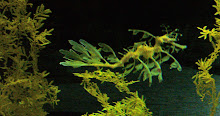
Pacific Salmon Species (copyright free image- for details, click [here]. Original source, click [here])
Hi. Welcome (back) to Weirdbeautiful.
First link of the day today is this somewhat more sinister tale of wild boars in Brittany being killed by toxic fumes from rotting seaweed. The toxic fumes are - allegedly- the result of effluent from local intensive pig farms reacting with natural algae in the Morieux river estuary in the Cote d’Armor region of Brittany to produce hydrogen sulphide- a gas as deadly as hydrogen cyanide, but with a significantly more powerful (and obnoxious)smell.The full story is online here-
http://www.dailymail.co.uk/news/article-2019422/British-holidaymakers-warned-killer-seaweed-strikes-Brittany-beaches.html
Secondly, according to that most reliable of news sources the British tabloid media (or should that be, "The Onion"?), Alaska is currently enjoying something of a heatwave with temperatures of around 16 degrees C; consequently the regions flowers are in full and abundant bloom, as these pictures show-
http://www.thesun.co.uk/sol/homepage/news/3722921/Freak-heatwave-transforms-Alaska.html
Beautiful though the landscapes shown are, as the article explains, all is not well in Alaska's meadows, since higher temperatures are believed to be causing the retreat of the state's glaciers. Glaciers in Montana, too are retreating, according to this article- http://travel.nytimes.com/2011/07/31/travel/glacier-national-park-montana-fading-glaciers.html?ref=global-home
by Stephen Nash in the travel section of The New York Times this week

Olympic National Park, Washington, (copyright free image- for details, click [here])
Finally, the last link-of-the-day today is to this article-
http://www.nytimes.com/2011/07/30/us/30dam.html?ref=science
also in the New York Times, about the removal of two dams in the Elwha River in Olympic National Park, Washington State. Hailed as "one of the most promising and pure acts of environmental restoration the region and the nation have ever seen", the project is "the largest dam removal project in American history". As the article explains, the removal of the dams will allow the river's salmon to migrate upstream to spawn- something which they have been prevented from doing for almost 100 years by the dams- and is expected to allow the migrating salmon population to increase from its current size- of around 3,000 individuals to its original size of around 392,000 fish. For the full article, click [here].









No comments:
Post a Comment